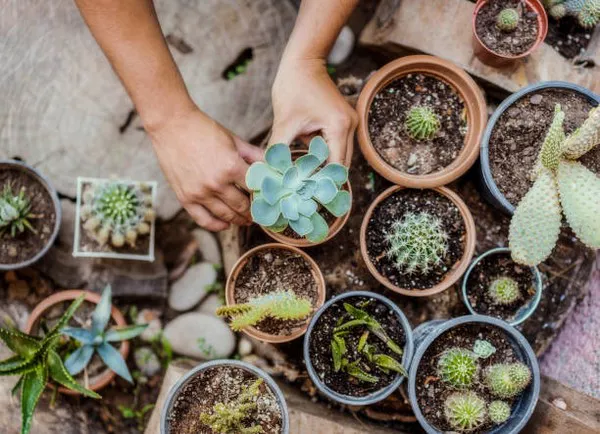In the realm of gardening and crafts, the allure of creating sustainable solutions often intertwines with the satisfaction of hands-on creativity. Making a paper flower pot combines these elements into a delightful project that not only serves practical purposes but also adds a touch of eco-friendliness to your gardening endeavors. Whether you are a seasoned gardener or a crafting enthusiast, this comprehensive guide will walk you through the steps to construct your very own paper flower pot, providing insights into materials, techniques, and variations to suit your gardening needs.
Materials Needed
Before delving into the construction process, gather the necessary materials. Crafting a paper flower pot requires items that are easily accessible and often found around the house or in a local craft store. Here’s what you will need:
Heavyweight Paper: Opt for sturdy paper such as cardstock or construction paper. The thickness of the paper ensures the pot retains its shape and durability.
Scissors or Craft Knife: Precision cutting tools are essential for accurate shaping of the paper.
Ruler: A ruler helps in measuring and ensuring straight folds and cuts.
Pencil or Pen: Used for marking and outlining folds.
Decorative Materials (optional): Ribbons, stickers, markers, or paints can be used to personalize your flower pots.
Glue or Tape: Depending on your preference, choose adhesive suitable for paper crafts.
Waterproofing Material (optional): To protect the paper from moisture, consider using a waterproof sealant or coating.
See Also: How to Make Dried Flower Shadow Box Art
Step-by-Step Guide
Step 1: Choosing a Template
Begin by selecting a template for your paper flower pot. Templates can vary in size and shape, depending on the types of plants you intend to grow. Common shapes include cylindrical, square, or hexagonal pots. You can find templates online, in craft books, or create your own based on desired dimensions.
Step 2: Cutting Out the Template
Once you have your template chosen or drawn, carefully cut it out using scissors or a craft knife. Precision is key here, as accurate cutting will ensure your flower pot assembles neatly. Use a ruler to guide straight edges and maintain uniformity in your cuts.
Step 3: Folding the Paper
With the template cut out, proceed to fold along the designated lines. Most templates will have crease lines marked to indicate where folds should be made. Use a ruler to help make sharp, clean folds. Folding accurately ensures the pot retains its shape and stability.
Step 4: Assembling the Pot
After folding, it’s time to assemble the flower pot. Begin by joining the edges or flaps of the paper template using glue or tape. Apply adhesive sparingly to avoid excessive dampening of the paper. Hold the joints firmly together until the adhesive sets.
Step 5: Reinforcing the Structure (Optional)
For added durability, consider reinforcing the structure of your paper flower pot. You can do this by applying an additional layer of paper or cardboard to the inside or outside of the pot. This step is particularly useful if you plan to grow plants that require frequent watering.
Step 6: Decorating (Optional)
Once the pot is assembled and reinforced, you can unleash your creativity by decorating it. Use markers, paints, stickers, or ribbons to personalize the pot according to your taste. Decorating also adds a charming touch to your gardening space.
Step 7: Waterproofing (Optional)
To protect your paper flower pot from moisture and extend its lifespan, consider applying a waterproof sealant or coating. This step is crucial if you intend to use the pot for plants that require regular watering. Ensure the sealant is non-toxic and suitable for use with paper crafts.
Variations and Tips
Variation 1: Newspaper Pots
Instead of using heavyweight paper, you can create eco-friendly pots using old newspapers. Simply fold the newspaper into a pot shape and secure the edges with tape or staples. Newspaper pots are biodegradable and can be planted directly into the ground as they decompose over time.
Variation 2: Origami Pots
For those who enjoy the art of origami, try making flower pots using origami techniques. Origami pots can be crafted from square sheets of paper and folded into intricate designs. They add an elegant touch to indoor gardening spaces and make for unique gifts.
Variation 3: Recycled Materials
Explore using recycled materials such as cereal boxes, milk cartons, or tin cans to create unconventional flower pots. Upcycling these items not only reduces waste but also adds character to your garden. Ensure to clean and prepare recycled materials properly before use.
Benefits of Paper Flower Pots
Making paper flower pots offers numerous benefits beyond their aesthetic appeal:
Eco-Friendly: Paper flower pots are biodegradable and environmentally sustainable compared to plastic alternatives.
Customizable: They can be easily customized with decorations and designs to suit different gardening themes.
Educational: Crafting paper flower pots can be a fun and educational activity for children, teaching them about recycling and gardening.
Cost-Effective: They are cost-effective as they utilize materials that are often readily available at home.
Versatile: Paper flower pots can be used for a variety of plants, from seedlings to small herbs and flowers, making them versatile for different gardening needs.
Conclusion
Crafting a paper flower pot is a fulfilling endeavor that combines creativity with practicality. Whether you are looking to add a personal touch to your garden or seeking a sustainable alternative to traditional plant containers, making paper flower pots allows you to explore your crafting skills while contributing positively to the environment. By following the steps outlined in this guide and exploring variations that suit your preferences, you can create beautiful and functional pots that enhance your gardening experience. Embrace the art of paper crafting and gardening with this eco-friendly DIY project—it’s not just about growing plants, but also nurturing creativity and sustainability in your home and garden.


